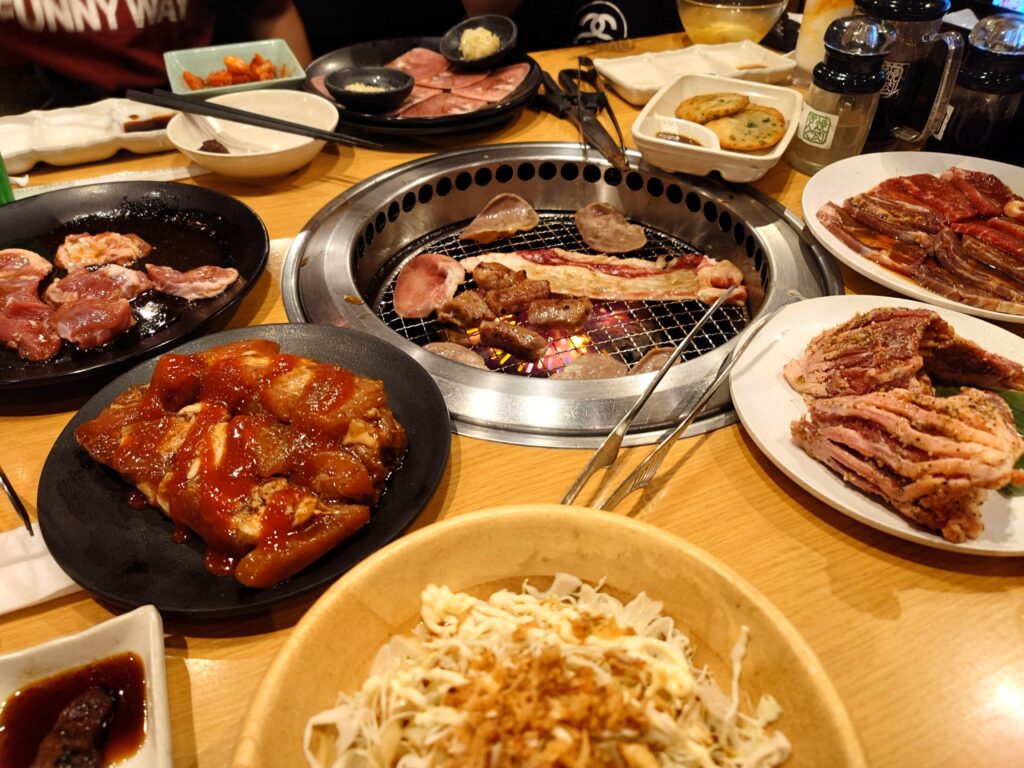
If you’re visiting Japan and craving a sizzling, savory experience, look no further than yakiniku—Japan’s beloved style of grilled meat. Whether you’re a foodie or just curious, this guide will walk you through everything you need to know to enjoy yakiniku like a local.
🔥 What Is Yakiniku?
Yakiniku (焼肉) literally means “grilled meat.” At a yakiniku restaurant, diners grill bite-sized pieces of meat and vegetables over a charcoal or gas grill built into the table. It’s interactive, flavorful, and perfect for sharing.
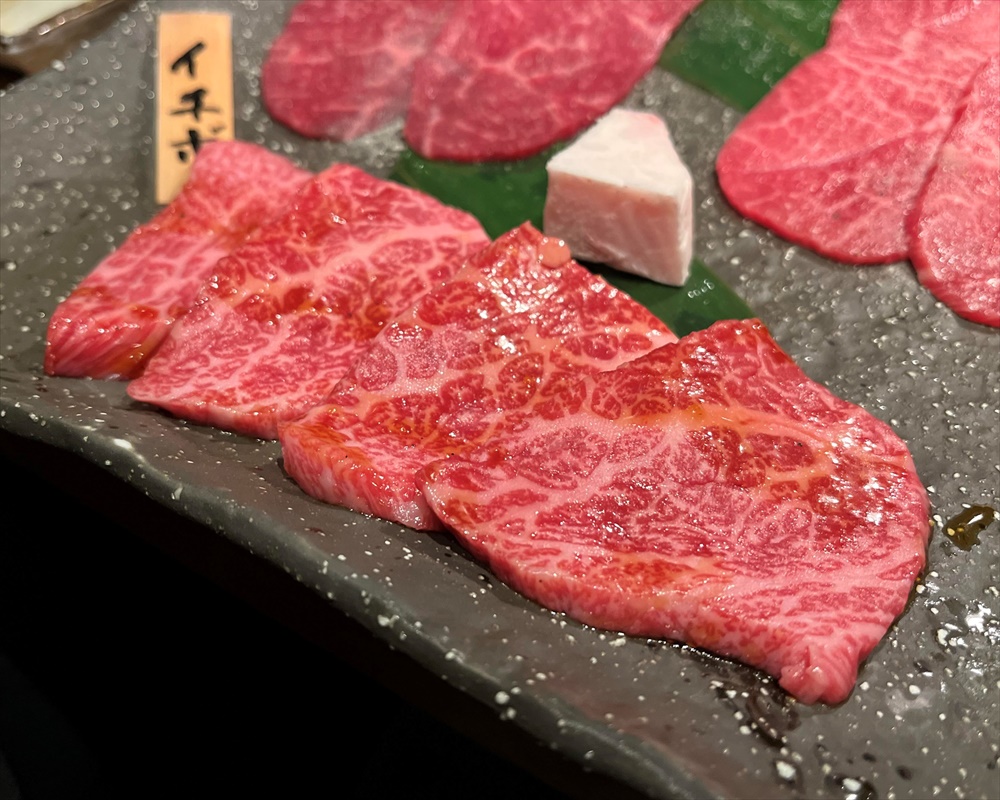
Popular cuts include:
- Karubi (short rib) – juicy and rich
- Rosu (sirloin) – lean and tender
- Harami (skirt steak) – flavorful and chewy
- Tongue (gyutan) – a delicacy with a unique texture
How to Eat Yakiniku
Eating yakiniku is part cooking, part dining. Here’s how to do it right:
- Use tongs for grilling: Most restaurants provide metal tongs to place and flip the meat. Avoid using your chopsticks on raw meat.
- Oil the grill: Some places offer a small piece of fat to grease the grill before cooking. This helps prevent sticking and adds flavor.
- Dip and enjoy: After grilling, dip your meat in sauces like:
- Tare – a sweet soy-based sauce
- Lemon juice – especially great with tongue
- Salt or sesame oil – for a lighter taste
- Pair with rice or bibimbap: A bowl of white rice is a classic companion. Some places also offer Korean-style bibimbap (mixed rice with vegetables and egg).
- Try the sides: Kimchi, namul (seasoned vegetables), and salads are popular appetizers that balance the richness of the meat.
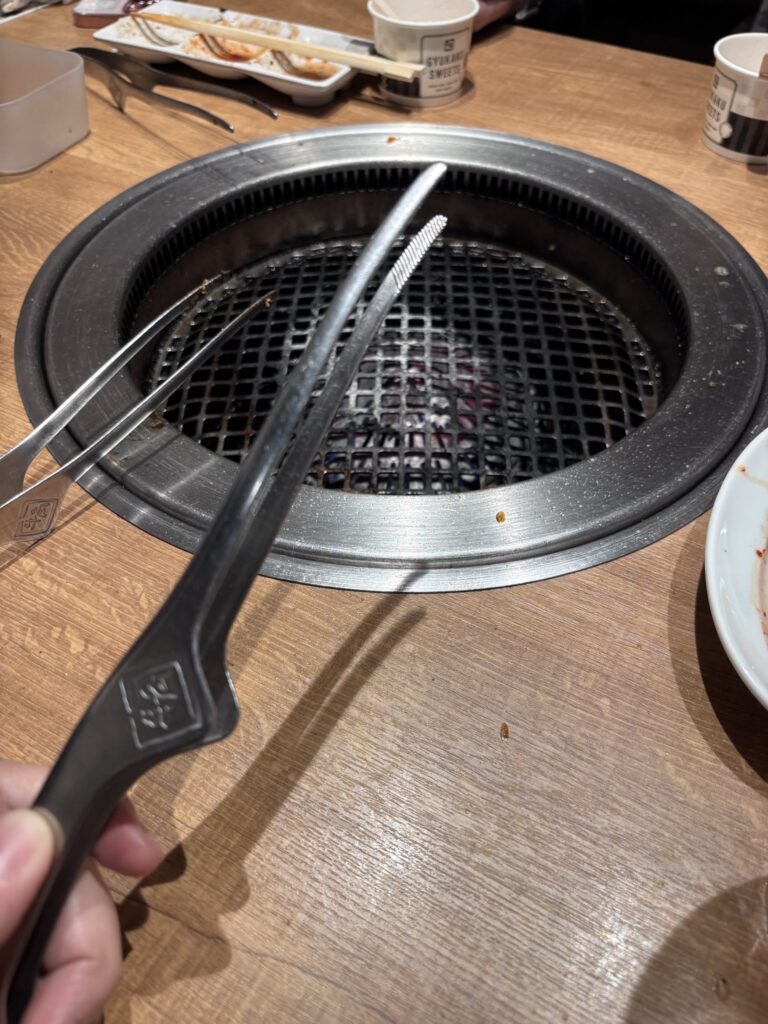
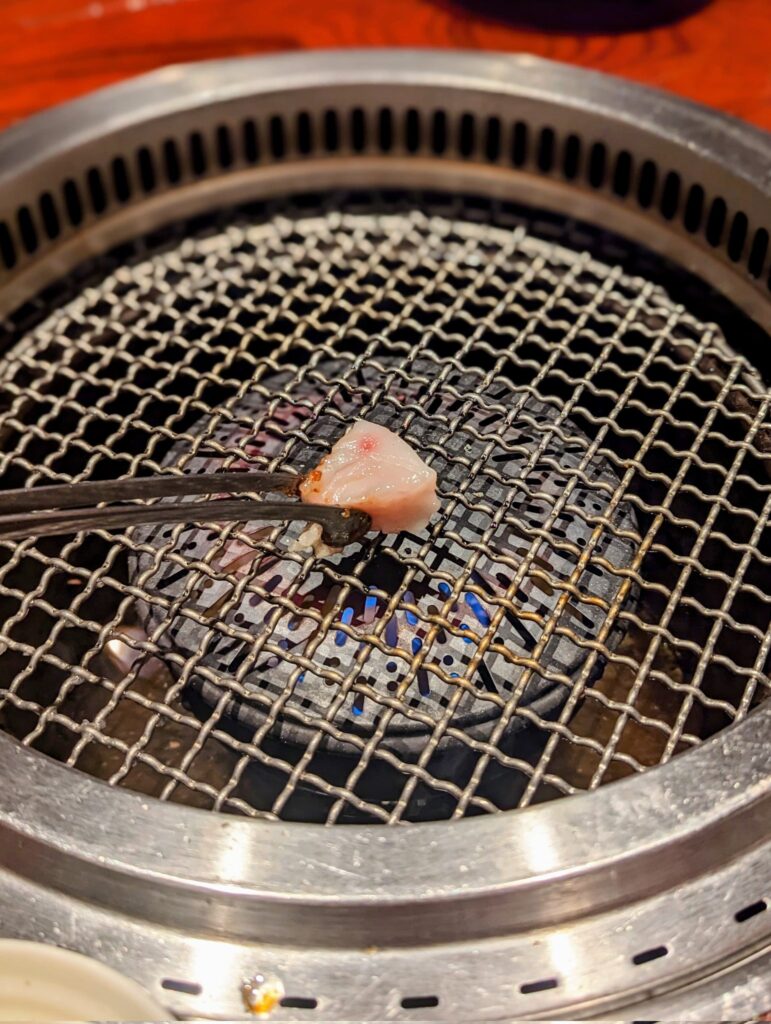
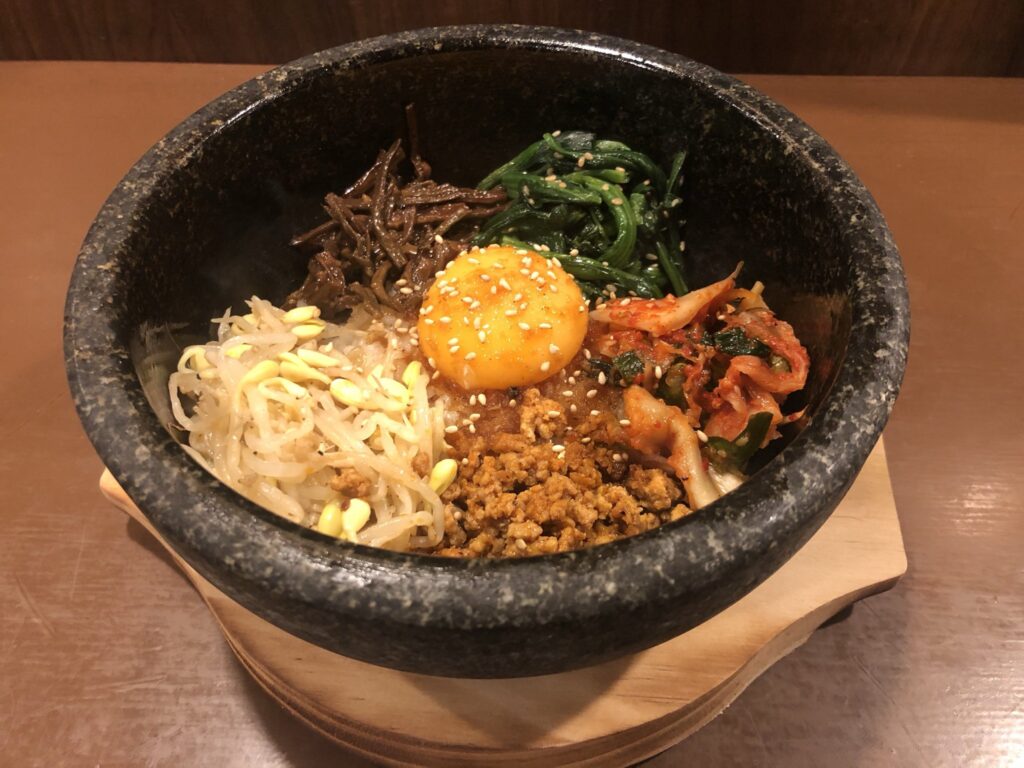
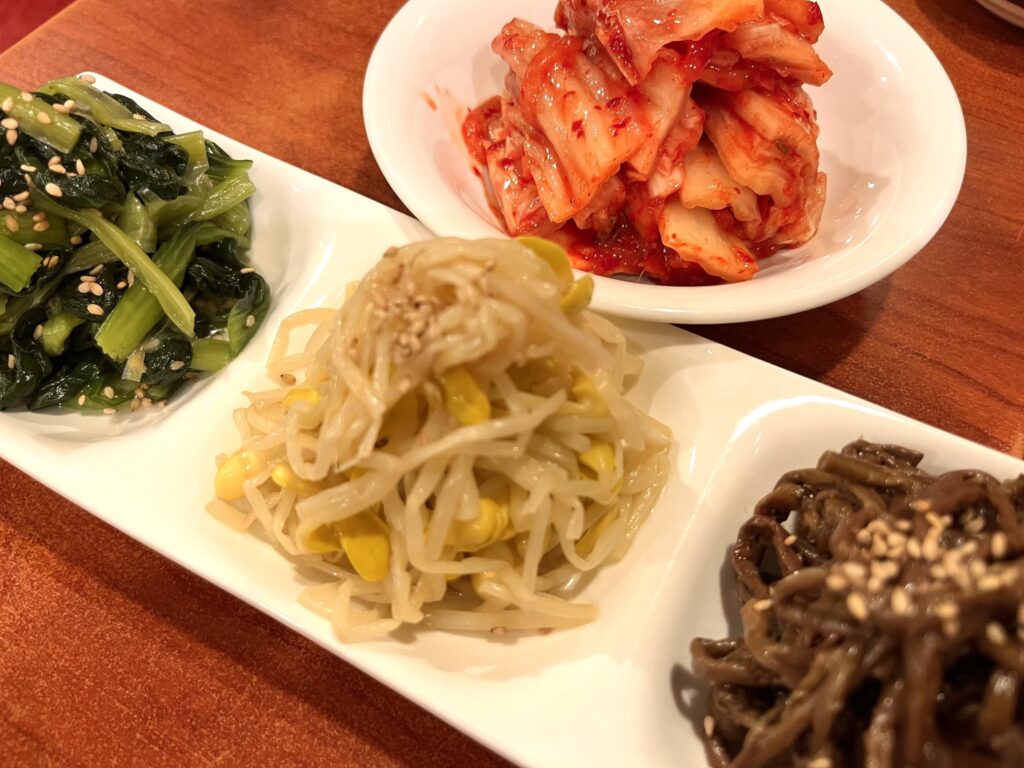
Grill Maintenance: Changing the Mesh
As you grill, the mesh (網, ami) can get charred and greasy. At mid- to high-end restaurants, staff may proactively change the mesh during your meal. If not, you can politely ask: “Sumimasen, ami wo koukan shite kudasai.” (Excuse me, could you please change the grill mesh?)
Yakiniku and Beer: A Match Made in Grill Heaven🍺
Ask any local, and they’ll tell you—yakiniku tastes even better with a cold glass of beer. The smoky, savory flavors of grilled meat pair perfectly with the crisp bitterness of Japanese lager. It’s not just a drink; it’s part of the experience.
Popular choices include:
- Asahi Super Dry
- Kirin Ichiban
- Sapporo Black Label
Many restaurants offer beer sets or all-you-can-drink (nomihodai) options, especially for groups. If you’re not into beer, highballs (whiskey and soda) or chilled oolong tea are great alternatives.
Just remember: grill responsibly 😉
Yukhoe (Yukke): A Raw Delicacy
For the adventurous eater, yukke is a must-try. Originating from Korean cuisine, yukke is a dish of seasoned raw beef, often topped with a raw egg yolk and served chilled.
In Japan, yukke is typically:
- Made from high-quality lean beef
- Mixed with sesame oil, garlic, soy sauce, and sometimes pear or scallions
- Served as an appetizer before grilling begins
Due to strict food safety regulations, only licensed restaurants can serve raw meat dishes like yukke. If you see it on the menu, it’s a sign the restaurant takes quality seriously.
Tip: Mix the egg yolk gently into the beef for a rich, silky texture.
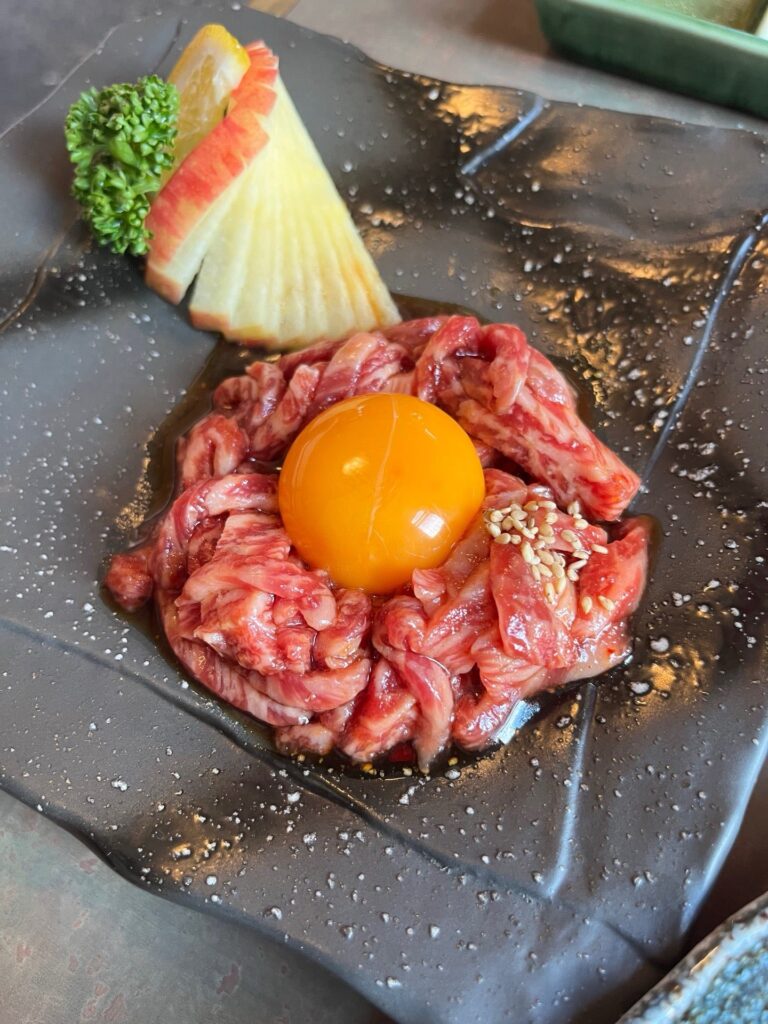
Finish Strong with Reimen (Cold Noodles)
After a hearty yakiniku feast, many locals cool down with a refreshing bowl of reimen, or cold noodles. Originally from Korean cuisine, Japanese-style reimen has become a popular way to end the meal.
What to expect:
- Chewy noodles served in a chilled, tangy broth
- Toppings like boiled egg, cucumber, kimchi, and sliced beef
- A clean, crisp flavor that balances the richness of grilled meat
Reimen is especially popular in summer, but many yakiniku restaurants offer it year-round. It’s the perfect palate cleanser—and a satisfying way to wrap up your meal.
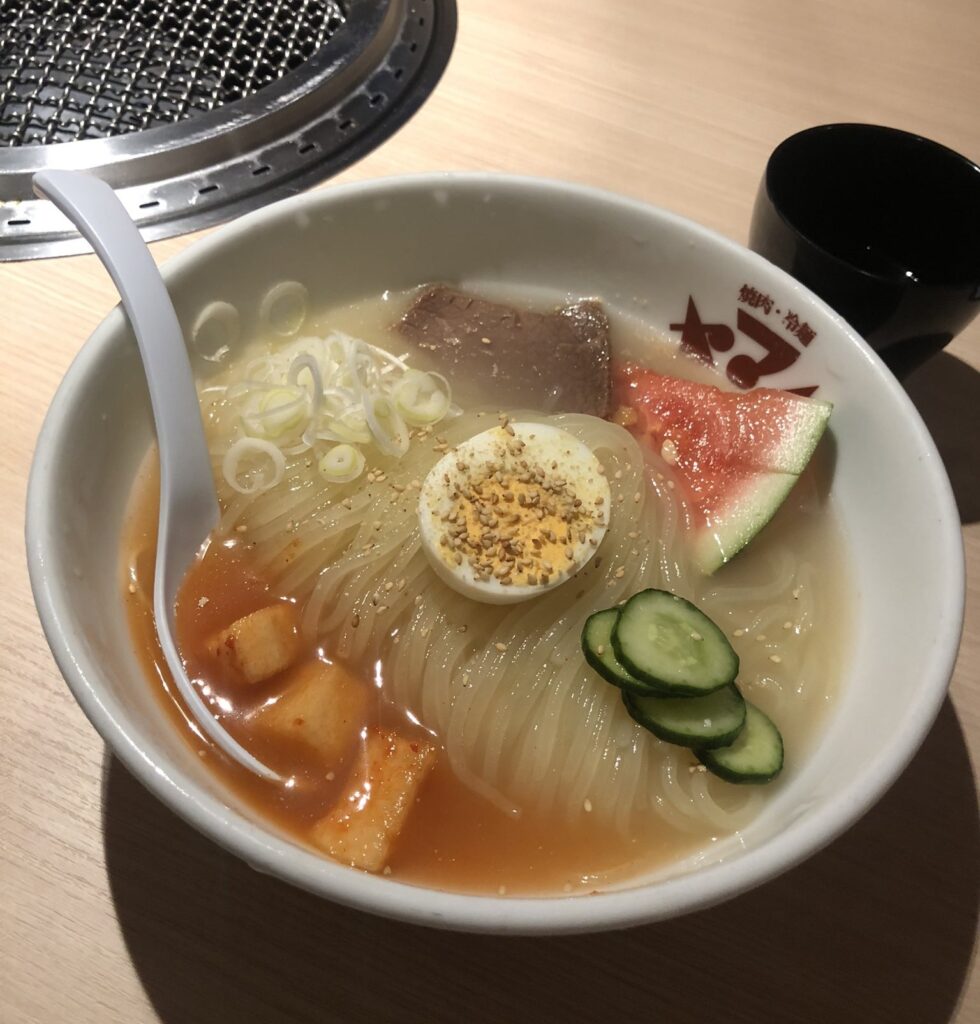
Price Ranges: From Budget to Luxury
Yakiniku fits all budgets:
| Type of Restaurant | Price Range (per person) | Features |
|---|---|---|
| Budget (e.g., chain stores) | ¥1,500–¥3,000 | Casual, self-service, limited cuts |
| Mid-range | ¥3,000–¥6,000 | Good variety, comfortable seating |
| High-end | ¥8,000+ | Premium wagyu, private rooms, attentive service, course menus |
At luxury yakiniku spots, expect:
- Course menus with curated cuts
- Mesh changes without asking
- Sommeliers for wine or sake pairing
⚠️ Things to Keep in Mind
- Don’t mix raw and cooked utensils: Use tongs for raw meat and chopsticks for eating.
- Watch the grill: Meat cooks fast—don’t leave it unattended!
- Respect the pace: Yakiniku is meant to be enjoyed slowly. Don’t rush.
- Mind the smoke: Some places have excellent ventilation, but your clothes might still smell smoky—avoid wearing delicate fabrics.
Final Thoughts
Yakiniku is more than just a meal—it’s a social experience that brings people together around the grill. Whether you’re trying wagyu for the first time or just enjoying a casual dinner, Japanese yakiniku offers a delicious window into local food culture.
Ready to fire up the grill? 🔥






